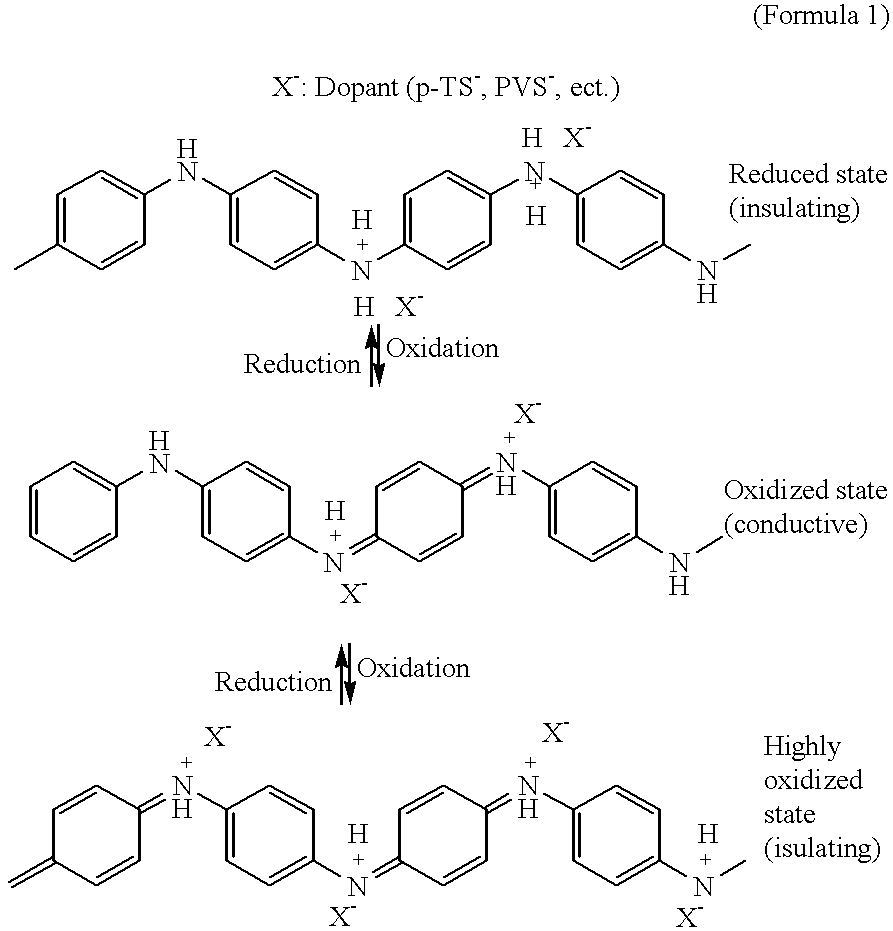Polymer secondary battery and method of making same
- Summary
- Abstract
- Description
- Claims
- Application Information
AI Technical Summary
Benefits of technology
Problems solved by technology
Method used
Image
Examples
example 4
relates to a battery of an aqueous solution type in which a composite material formed from poly(1,5-anthraquinone (hereinafter referred to as P(1,5-AQ)) and carbon was used for the positive electrode and a composite material formed from Ppy and carbon is used for the negative electrode. Quinones are characterized in that the number of reacting electrons per molecule is as much as 2 and a high capacity can be drawn as a result of oxidation-reduction reactions. Accordingly, they have conventionally formed a subject of investigations on the improvenent of the energy density of a battery. However, these quinones have the disadvantage that they have very low electronic conductivity and, when used as active materials for batteries, they tend to diffuse out into the electrolystic solution over time owing to their low molecular weights. Consequently, it has been imposible to use them alone as active materials for batteries.
In this Example 4, the use of a quinone as an active material for ba...
example 5
relates to a battery in which a gel electrolyte prepared by adding a small amount of an ethylene carbonate (EC) solution containing 1 M fluoroboric acid (as used in Example 3) to a solid electrolyte (i.e., Nafion (trade name)) having protonic conductivity was used in place of the 3M aqueous solution of PVS" used as the electrolytic solution in the battery of Example 2. The fabrication of positive and negative electrodes and the assembly of a battery were carried out in the same manner as in Example 2.
The oxidation-reduction reactions occurring in the positive and negative electrodes of the battery of Example 5 are the same as described in Example 2. The only difference is that the proton source comprises a gel electrolyte instead of an electrolytic solution.
The results of tests for the charge-discharge performance and cycle characteristics of this battery are shown in Table 1 (the testing conditions are also shown in Table 1).
A polymer secondary battery was constructed in the same m...
PUM
 Login to View More
Login to View More Abstract
Description
Claims
Application Information
 Login to View More
Login to View More - R&D
- Intellectual Property
- Life Sciences
- Materials
- Tech Scout
- Unparalleled Data Quality
- Higher Quality Content
- 60% Fewer Hallucinations
Browse by: Latest US Patents, China's latest patents, Technical Efficacy Thesaurus, Application Domain, Technology Topic, Popular Technical Reports.
© 2025 PatSnap. All rights reserved.Legal|Privacy policy|Modern Slavery Act Transparency Statement|Sitemap|About US| Contact US: help@patsnap.com



